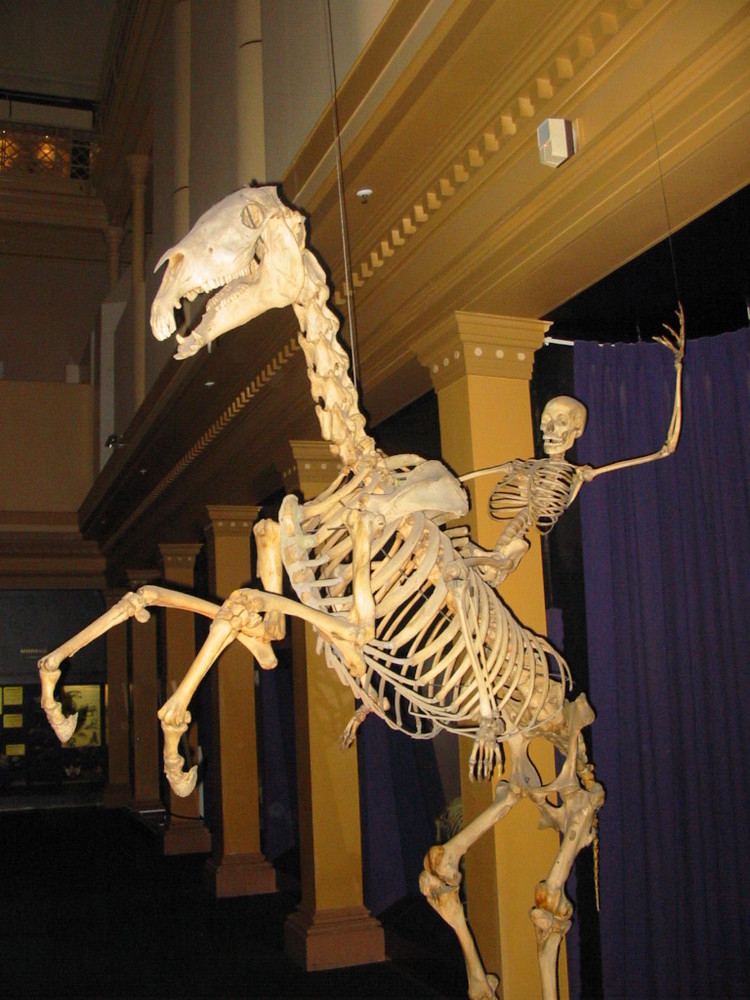Planet Earth Online - Carbon Dating
Interview with
Dave - In the late 1940s a Chemist called Willard Libby, who originally worked on uranium during the Manhattan project, developed a method of dating material with a biological origin. As it's radioactive, the levels of carbon-14 in the material decreases as it ages but the amount of the stable carbon-12 doesn't change. Therefore by looking at the ratio of carbon-12 and radioactive carbon-14 we can date the material. Radiocarbon dating is an extremely accurate and useful tool to date an archaeological find that contains any previously living material. Planet Earth podcast presenter Sue Nelson met Tom Higham from the Oxford Radiocarbon Accelerator Unit to find out how it works.
Tom - This machine's job is basically to take tiny amounts of graphite, which contain carbon and therefore the carbon 14, derived from the archaeological bone or charcoal or whatever it happens to be. It then separates just the carbon-14 from all the other interfering particles, rather like a large sieve. The way it does that is by particle acceleration, by beam bending the particles so that they can be separated by magnetic forces. The problem that we have though is that only a tiny amount of that carbon is carbon-14. One particle in a billion, billion is carbon-14. That's why we need such a large machine, to be able to separate out all the interfering particles that aren't carbon 14.
Sue - So if you had for example a bone that you wanted to analyse, where would it actually go?
 Tom - The first stage is get the bone and to take about half a teaspoon of powder from the bone to extract the collagen. Stage two is then to combust the collagen, purify the gas and convert the carbon dioxide into graphite. Then the graphite is loaded into one of those small aluminium holders there.
Tom - The first stage is get the bone and to take about half a teaspoon of powder from the bone to extract the collagen. Stage two is then to combust the collagen, purify the gas and convert the carbon dioxide into graphite. Then the graphite is loaded into one of those small aluminium holders there.
Sue - This almost looks like a gun canister with bullets.
Tom - Yes and then you see this little hole on the top? It's about a millimetre in circumference. That contains the graphite from the bone and it's pressed very firmly onto the top of this target. It's then put into this large wheel of samples here which number about 50 or 60. Once the accelerator is loaded with this wheel, a caesium beam is projected onto the surface of the graphite. That process, called sputtering, gives a charge to the particles. That is really, really important because if we don't give the particles a charge, it means we can't bend them, we can't move their trajectory and separate the particles from other particles of a different mass.
Sue - Let's go into the quieter area now...
Tom - This is the control room where the measurements are monitored and the machine is started and stopped and also where the dates are calculated. In the old days it used to take a day or so to calculate a batch of radiocarbon dates. Now of course we have computers that do it in the space of a blink of an eye.
Sue - How do you actually tell the age of something from the amount of radioactive carbon in it?
Tom - The dating process is built around the half-life of radiocarbon. The half-life simply means the amount of time it takes for half of the radioactive carbon that is present per gram of material in a living organism to decay after death and disappear. We know that the half-life of radiocarbon is about five and a half thousand years. That means that every 5,500 years the amount of radiocarbon declines by half. So after ten half-lives you're back to around 55,000 years. Then there should be no more carbon-14 left, so that marks the limit of the dating technique. The great thing about radiocarbon dating is that carbon is ubiquitous in the biosphere. There are many different types of materials that we can date - whether they be bones, charcoal, wood to things like molluscs and fish, fish bones, pollen. Since the 1950s there's been a doubling of the amount of radiocarbon in the world because of the nuclear testing that took place in the 1940s, 50s and 60s. So, if we measure something that's modern, modern being since 1950, we can get a very high level of radioactive carbon that we know therefore must equate with a date in the modern period.
Sue - Modern particle accelerators and pre-treating samples to remove contaminants have improved the accuracy of radiocarbon dating. In some cases, artefacts need to be re-tested. Tom's unit helped produce recent research which suggested that Neanderthals probably died out ten thousand years earlier than previously thought.
Tom - Unfortunately in many cases, when we do this work, we find that the previous dates are underestimating the real age. There's a huge amount of work to be done still in applying these new techniques to find the real chronological picture.
Sue - So you could actually put a lot of noses out of joint?
Tom - Yeah, that's right. I think it's fair to say there are lot of people with a lot of vested interests in this. They've written a lot over the last few decades and they've been involved in bitter arguments that, in some cases, are over data that we now know are probably not reliable. So yes, there is a tendency to do that.
Dave - That was Tom Higham from the Oxford Radiocarbon Accelerator Unit talking to Sue Nelson.









Comments
Add a comment